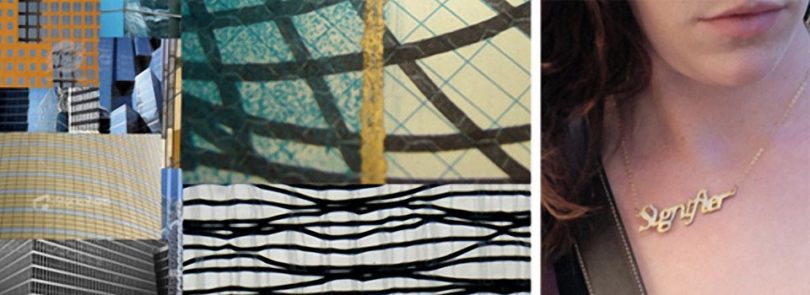What do digital literature, poetry pedagogy, postmodern jewelry and engineered art have in common? These are some of the topics that were explored by students when art and research intersected at the recent spring symposium sponsored by the Honors Program’s Center for Undergraduate Research Opportunities.
Visual and performing arts have been a part of the CURO symposium since 2000. But this year new directions in arts research were emphasized. The art presentations and exhibition were coordinated with the assistance of Mark Callahan, who serves as artistic director for Ideas for Creative Exploration, an interdisciplinary initiative for advanced research in the arts at the University of Georgia.
“The symposium featured students engaged with a variety of approaches to research in the arts, ranging from cutting-edge digital technology to new ways of applying traditional methods,” said Callahan, a faculty member in UGA’s Lamar Dodd School of Art.
For his research project, Jordan Dalton combined improvisation, digital images and video, sculpture, poetry and experimental theater to develop a multi-media performance of a hybrid poem-play by Lara Glenum, who recently earned a Ph.D. in creative writing from UGA. Dalton, a senior Honors Interdisciplinary Studies major in digital literature and dynamic media, received a grant from ICE for the project that also involved Cal Clements, a part-time comparative literature instructor at UGA.
“Much of my work and research deals with transforming and translating language, whether text into sound or printed text into digital media,” said Dalton. “Although this project deals with similar literary themes as some of my previous work, this piece is decidedly more ‘analog’ than digital, featuring hand-built instruments and other low-tech elements. This type of collaboration is my ideal mode of art-making because it combines the talents of multiple people in order to create something larger.”
Laura Leidner discussed her experiences as a first-time creative writing instructor for a group of low-income middle-school students who are dialect speakers of English. In an after school program setting, she incorporated poetry and narrative to engage the students and show them how their vernacular could be used in creative expression. She also kept a poetic and narrative journal to document her teaching experiences.
“I have been able to create little spells with these students, showing them the beauty and rhythm inherent in their speech and sharing the magic of poetry,” said Leidner, a sophomore double major in English and Russian. “The experience also has opened my eyes to the need for building alternative literacy environments based on the students’ individual needs. This project allows me to ask questions about how and why poetry can further education and enhance teachers’ approaches to reading and writing in the classroom.”
Marilyn Zapf critiqued the role of commercial trend-based jewelry, such as the gold and silver nameplate necklaces that first gained popularity in the 1980s, through a postmodern lens. She created some hand-made pieces by fusing colored glass to copper, known as enameling, spelling out “Signifier” or “Image,” for example, to show how the necklaces have been used to symbolize societal status.
“Doing research in the arts provided me with the time necessary to develop a deeper understanding of my topic as well as the methods other artists have used to investigate similar subject matter,” said Zapf, a senior double major in fine arts (jewelry and metalworking) and English. “The format of the symposium allowed the artists/presenters the ability to communicate the research behind the work-something that can be overlooked by visitors in a gallery.”
Brittany Norman’s interests and current Honors Interdisciplinary Studies major in visual art, computer science and engineering were illustrated in several projects she presented at the CURO symposium. These included fractal-patterned paintings, sculptures using robotic technology, and an interactive video projector that can respond to the location of a person’s footsteps.
“I think that the work I am doing helps facilitate more interaction between people from different academic departments,” said Norman, who is a junior. “The interdisciplinary, collaborative approach to research can often lead to original insight because it allows people to look at a problem from different perspectives.”







